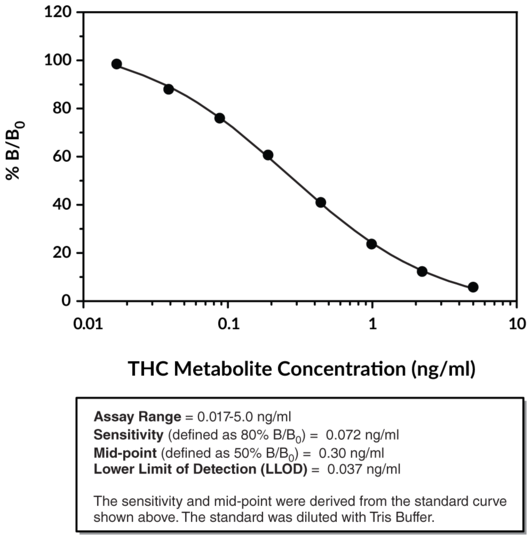ELISA as a Tool for Cannabinoid Detection
ELISA stands for Enzyme-Linked Immunosorbent Assay. [1] It is a way to detect the presence of compounds with extremely high specificity and sensitivity using the same proteins our immune system uses for tagging suspicious objects: antibodies. Antibodies are like the rotating strobe lights surrounding a guarded compound, except that each light is only tuned to recognize a single enemy, or in our case, molecular structure. Even the most minute deviation in structure will make it unrecognizable to these guardians, and it is this reason that prevents our body from attacking useful products, or itself, most of the time.
On a side note, what we call an “allergic reaction” is actually antibodies that have been programmed to misidentify harmless compounds as dangerous. That is the basis for food and contact allergies, and also the reason why allergies are always acquired after an exposure and not before (e.g. poison oak, if you’ve ever had the misfortune of wading into some for a first time, is much more reactive the second time around).
ELISA takes this system a step further and conjugates (adds on) a specific enzyme to the tail end of the antibody. Antibody recognition and binding to an antigen (its specific target) forces conformational three-dimensional changes on the enzyme that cause it to activate. The enzyme-antibody conjunct is built in such a way that if (and only if) the antibody binds to its selective target does the enzyme become active. The active enzyme catalyzes the conversion of a specially-incubated fluorescent dye that only starts shining once the enzyme has done its job. As the figure shows below, the amount of compound in the system will therefore be directly proportional to the brightness of the ensuing light, and this can be used to calculate its concentration in the original tissue or sample.

Of all the common cannabinoids in cannabis products, routine drug tests only search for the presence of THC in the body. This includes metabolites produced by the liver after THC has entered the blood, which include 11-hydroxy-THC and 11-nor-9-carboxy-THC. These metabolites often linger in the body for much longer durations than the psychoactive Δ-9-THC itself, and so are usually what these drug tests are actually searching for, with an extremely low detection limit as seen in the detection curve below (B = brightness, B/B0 = brightness relative to null standard).

- Engvall E and Perlmann P. “Enzyme-linked immunosorbent assay (ELISA). Quantitative assay of immunoglobulin G”. Immunochemistry. 1971;8(9):871-4 [Cited by: 4,689, Journal impact factor = 1.650]








